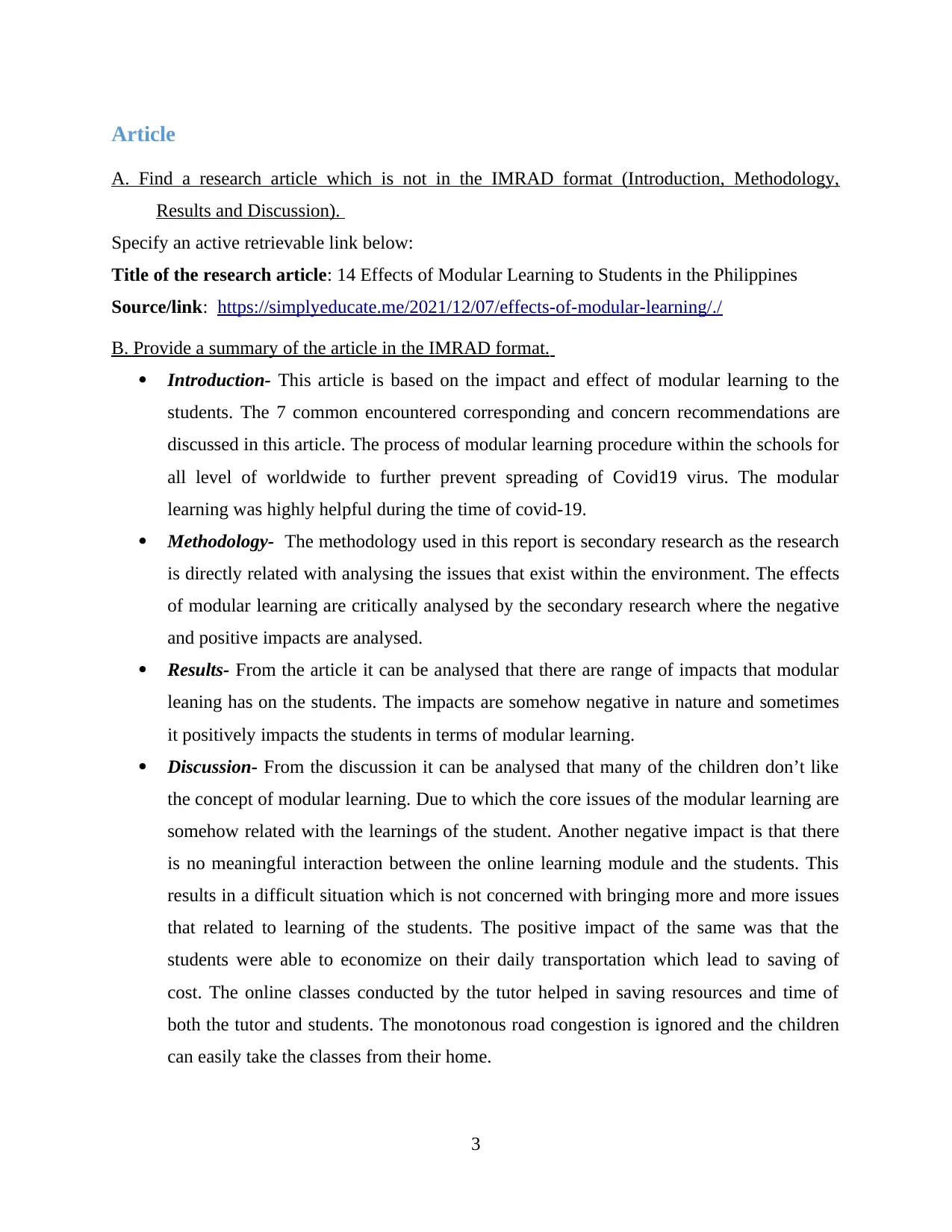Analyzing Modular Learning: An IMRAD Critique and Research Concepts
VerifiedAdded on 2023/06/12
|5
|915
|248
Essay
AI Summary
This essay presents an analysis of a research article on the effects of modular learning on students in the Philippines, transforming it into the IMRAD format (Introduction, Methodology, Results, and Discussion). The introduction highlights the impact of modular learning during the COVID-19 pandemic. The methodology employs secondary research to analyze the positive and negative impacts. Results indicate varied impacts, with children disliking the lack of meaningful interaction but appreciating cost savings on transportation. The discussion elaborates on the challenges of online learning modules and the benefits of economizing resources. Furthermore, the essay includes a critique of the research paper based on specified guide questions, evaluating aspects like the clarity of aims, hypotheses, variable operationalization, study design, and statistical analysis. It concludes with an analysis based on research concepts and principles, differentiating the impacts and suggesting ways to address the negative effects of modular learning. The document is available on Desklib, a platform offering study tools for students.
1 out of 5











![[object Object]](/_next/static/media/star-bottom.7253800d.svg)